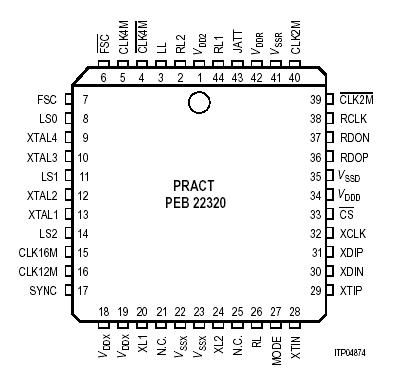PEB22320: Features: • ISDN line interface for 1544 and 2048 kbit/s (T1 and CEPT)• Data and clock recovery• Transparent to ternary codes• Low transmitter output impedance for a high ret...
floor Price/Ceiling Price
- Part Number:
- PEB22320
- Supply Ability:
- 5000
Price Break
- Qty
- 1~5000
- Unit Price
- Negotiable
- Processing time
- 15 Days
SeekIC Buyer Protection PLUS - newly updated for 2013!
- Escrow Protection.
- Guaranteed refunds.
- Secure payments.
- Learn more >>
Month Sales
268 Transactions
Payment Methods
All payment methods are secure and covered by SeekIC Buyer Protection PLUS.

 PEB22320 Data Sheet
PEB22320 Data Sheet








